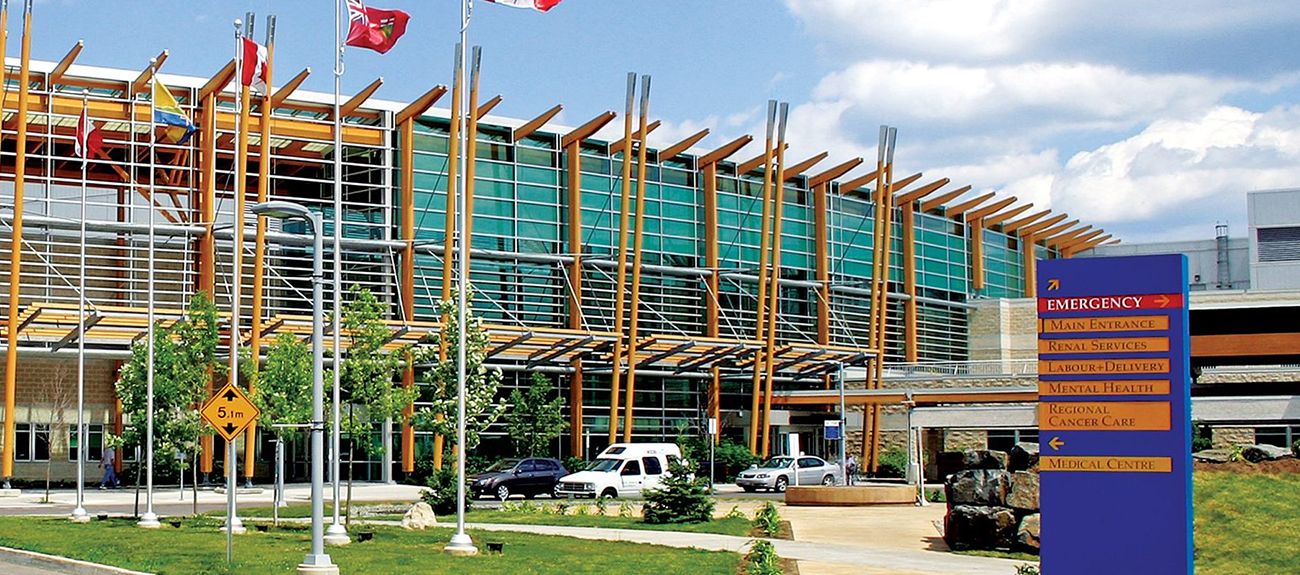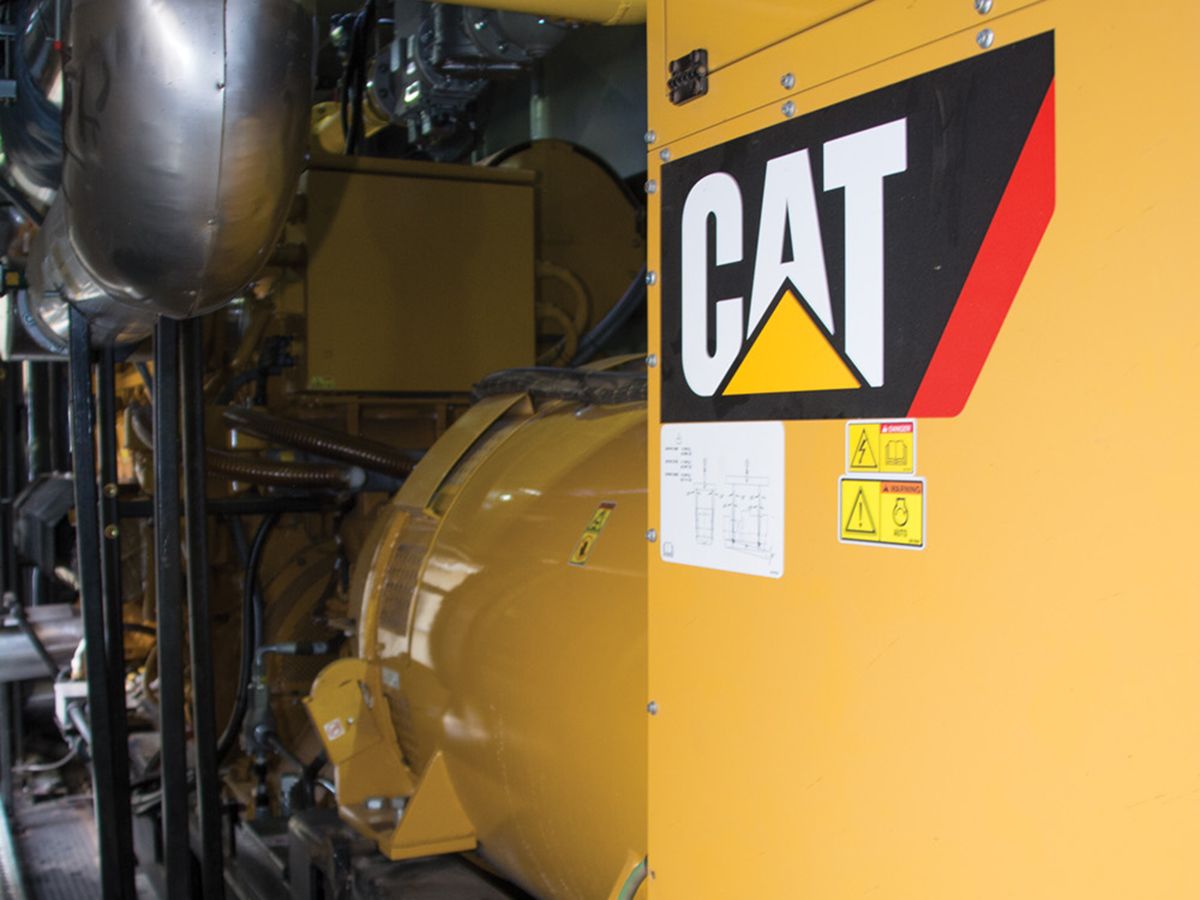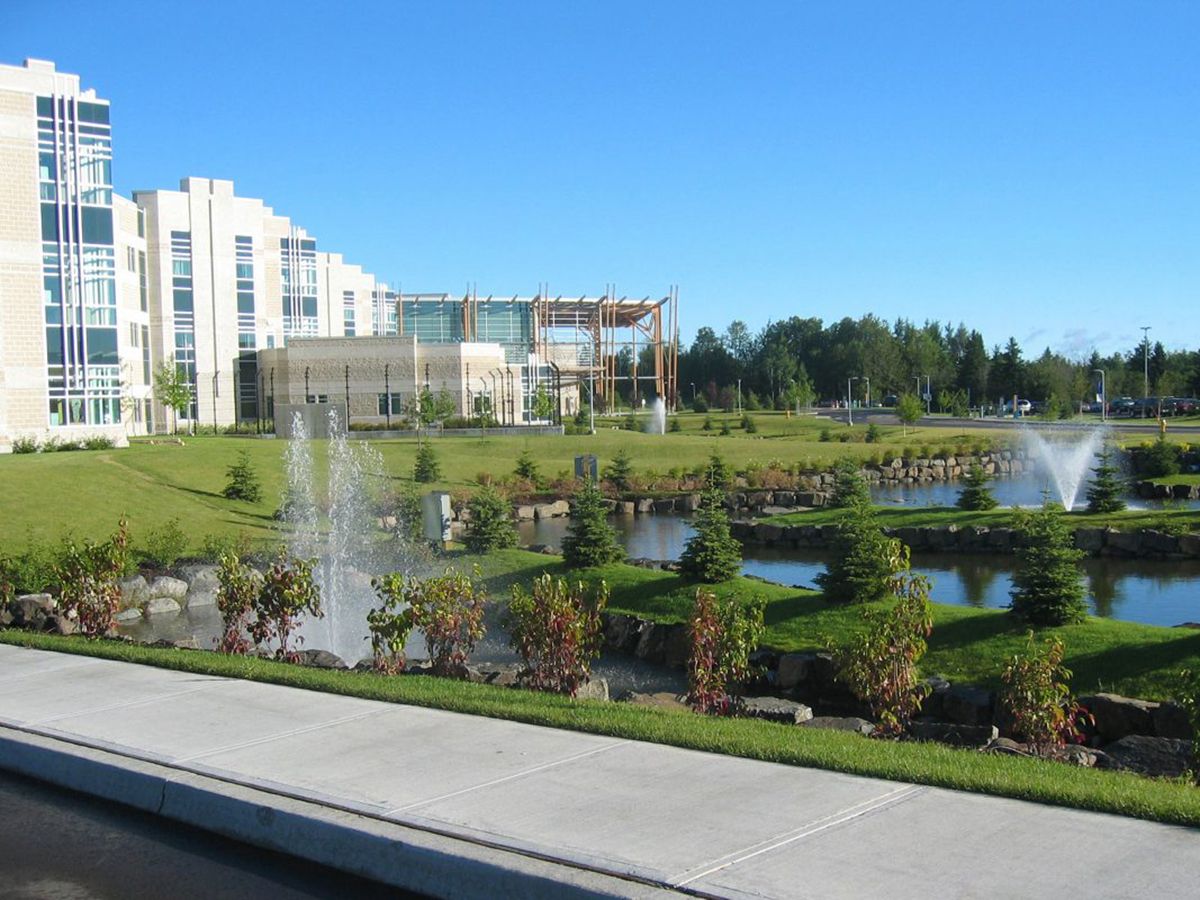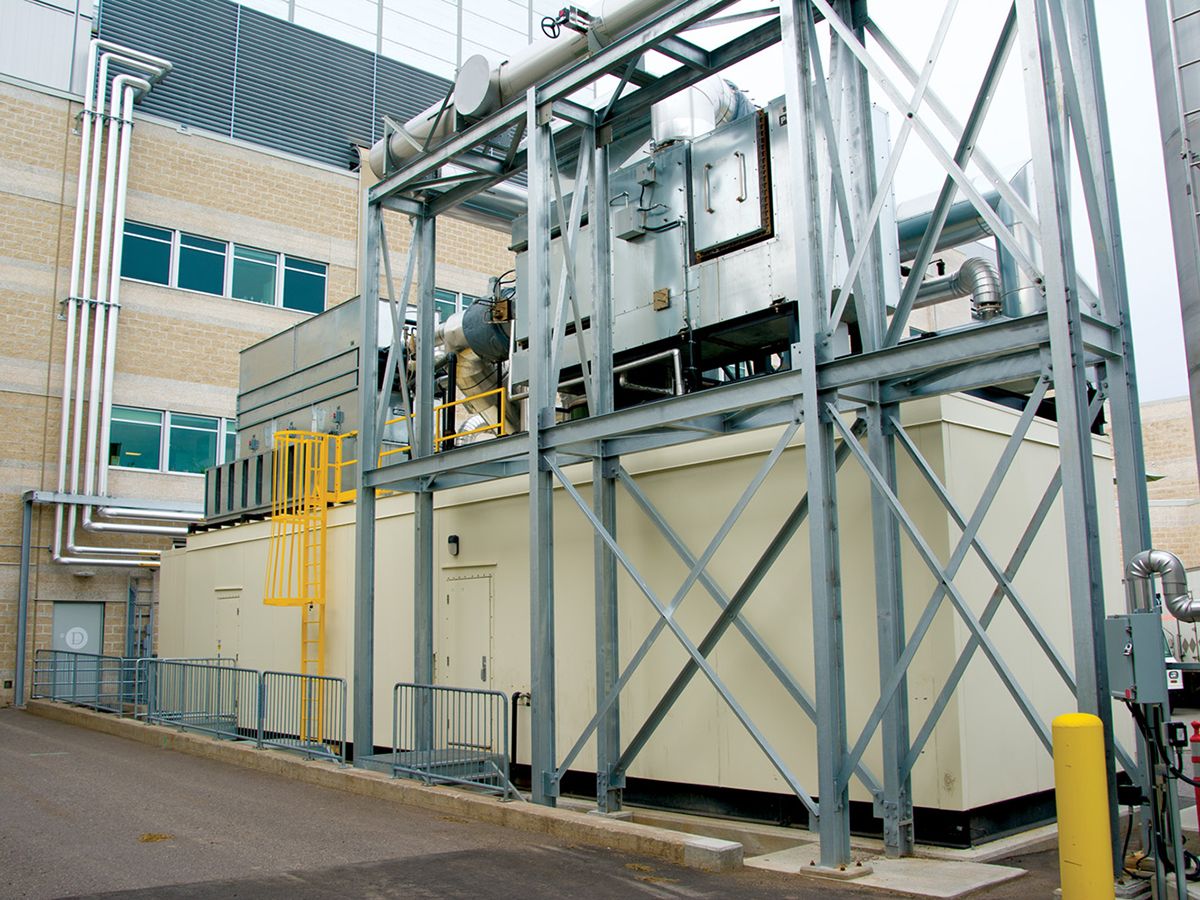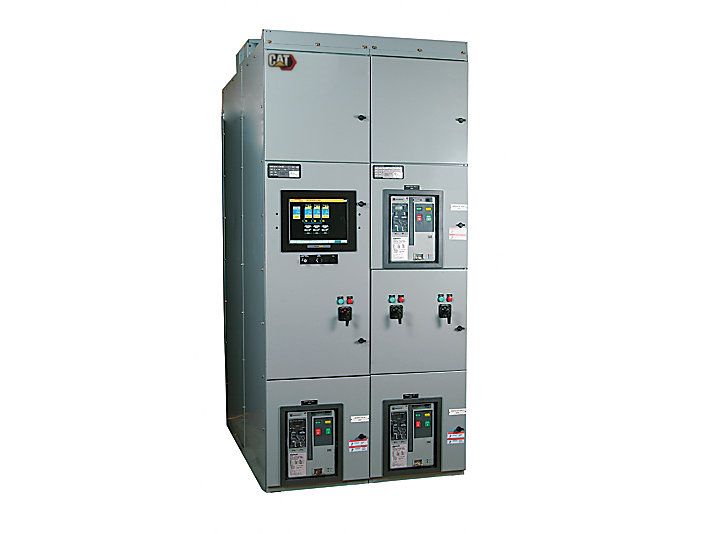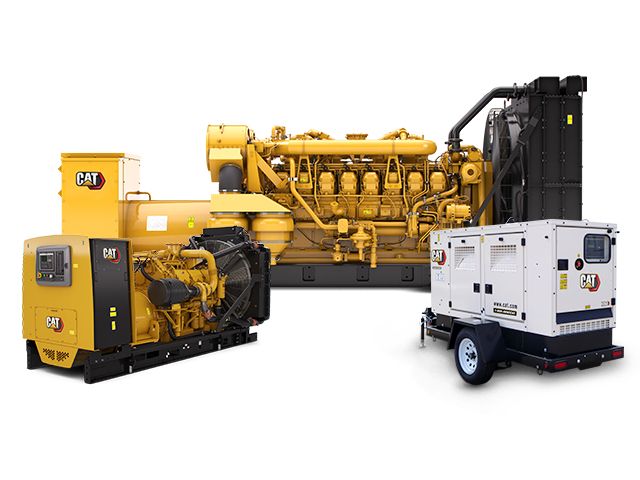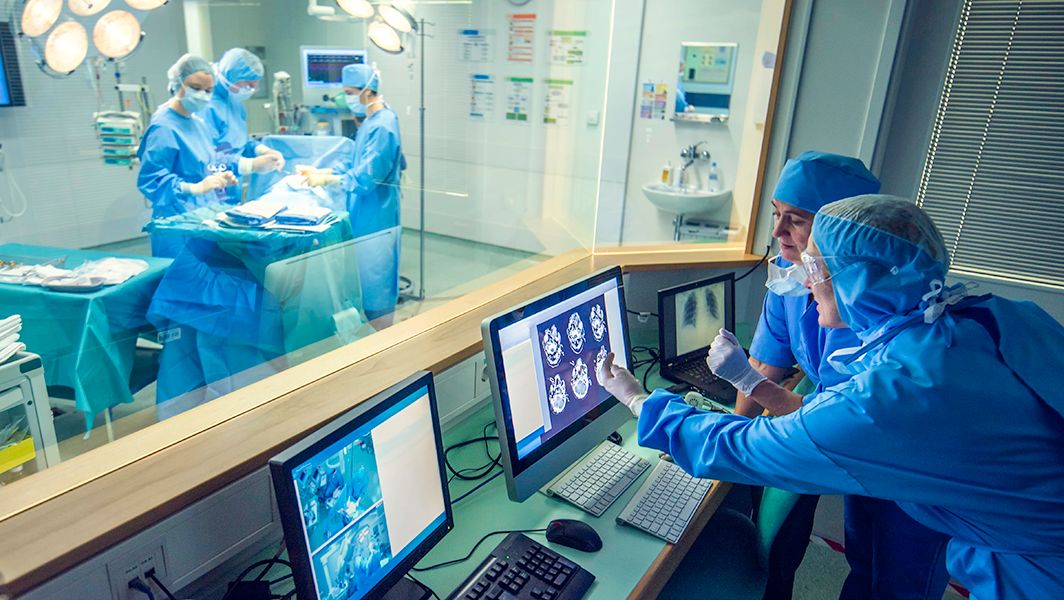POWER NEED
Thunder Bay Regional Health Sciences Centre (TBRHSC) is an acute care facility serving Thunder Bay and northwestern Ontario, Canada. The facility has earned a worldwide reputation for its award-winning, innovative design.
Situated on a landscaped site of nearly 70 acres, the 375-bed hospital was architecturally designed to provide a more inviting and less stressful atmosphere for patients, visitors, and staff.
Effectively addressing the healthcare needs of patients and families has earned the hospital both innovation awards and leading practice designations.
The hospital offers an expansive range of specialist services and is designated as an academic health sciences centre. Its research arm, the Thunder Bay Regional Health Research Institute, houses the region’s only Cyclotron and Radiopharmacy, capable of producing medical isotopes for clinical use.
TBRHSC is consistently ranked as one of the top 40 research hospitals in Canada. As one of the largest employers in Thunder Bay with nearly 2,800 staff, 500 volunteers, and 100 patient family advisors, the annual operating budget is over $300 million.
As TBRHSC continues to grow due to increasing community demands, the hospital needed to re-evaluate alternatives to meet energy demands.
Typically, a hospital uses up to three times the energy used by a commercial building because of the 24/7 energy demand, including heating and cooling. Hospitals operate on fixed budgets, and the rapid increases in the price of energy in recent years have created challenges.
Using a combined heat and power (CHP) or cogeneration plant in a hospital is an ideal way to improve energy efficiency and reduce carbon emissions. It can extend a hospital’s limited financial resources, saving anywhere from 30 to 40 percent on energy costs, according to industry analysts.
Cogeneration is the simultaneous production of two different forms of energy, heat and electricity, from a single input energy. Heat recovered from the plant’s internal combustion engine is not released into the air as waste, but instead used to produce hot water thereby eliminating the use of additional boilers and fuel.
With a daily average of 420 patients plus a staff of 2,500, the demand for electricity and hot water is constant, says Allan Korol, physical plant manager for TBRHSC.
“Cogeneration is a good fit for a big building such as ours,” Korol says. “This facility is full of patients 24 hours a day, seven days a week and 365 days of the year. So, the need for energy is continuous.”
SOLUTION
Several years ago, TBRHSC worked with Thunder Bay Hydro and Johnson Controls to install a cogeneration plant powered by a Cat® G3516H gas generator set to increase energy efficiency and reduce the reliance on power from the utility grid.
The generator set—which is housed in an enclosure located near a receiving area next to the hospital—was commissioned in late December 2015.
“As one of Thunder Bay’s largest employers, we oversee a vast facility that requires a significant amount of electricity to heat, cool, illuminate, and power on a daily basis,” said Jean Bartkowiak, president & CEO of TBRHSC and CEO of Thunder Bay Research Institute. “This project helps to reduce our energy costs and emissions, which also enables us to focus more resources on direct patient care.”
A sound-attenuated enclosure engineered by Cat dealer Toromont Power Systems houses the generator set and switchgear. The Cat Switchgear is designed for utility paralleling with islanding capability. It controls and monitors the entire CHP system, and includes both generator and utility protection.
To meet environmental standards, a selective catalytic reduction (SCR) system placed on the roof of the enclosure reduces NOx emissions from 70 to 80 parts per million down to 30 ppm. A 100-foot stack sends the exhaust well above the roofline of the four-story hospital.
“We’re meeting all Ontario Ministry of the Environment requirements with regard to emissions and noise abatement,” Korol says.
Additionally, the new plant provides supplemental electrical power in the event of an extended power outage.
RESULTS
The CHP plant produces more than 16 million kWh of power and approximately 50 billion BTUs of heat per year. During peak use periods, the hospital requires 4.2 MW of power, and an average of 3 MW. The cogeneration system supplies about 75 percent of the hospital’s power needs.
The cogen plant combined with energy savings initiatives such as installing LED lighting throughout the facility has led to an annual savings of more than CA $500,000, and is increasing yearly, Korol says.
“The fact that natural gas is fairly reasonably priced and electricity in Ontario is expensive and getting more expensive makes this an attractive proposition for us,” Korol says. “And our savings are projected to increase in the future as electricity rates escalate.”
Heat recovered from the plant’s Cat genset engine is not released into the air as waste, but instead is captured and used to produce hot water, thereby reducing the costly use of boilers and fuel. Electricity is produced by burning natural gas—a cleaner fuel that reduces TBRHSC’s carbon footprint.
Waste heat from the engine is utilized in both high temperature and low temperature loops. The high-temperature loop, which is in the 190°F range, is injected directly into the boiler supply that provides hot water for the whole facility. Utilizing the waste heat reduces the amount of energy required to operate four water boilers by one half, says mechanical power engineer James Cole.
The low-temp loop is used for preheating reverse osmosis water that is utilized in humidification and boiler makeup water through a heat exchanger. The low-temp water is utilized in two air handlers that preheat the air before a glycol system completes the process.
“So it’s adding efficiency to these two air handling units,” Cole says. “The low-temp loop is just the icing on the cake.”
Waste heat from the genset also increases the efficiency of the steam boilers. Altogether, the combined efficiency realized from the Cat cogeneration plant is in the high 80s, Cole says.
In order to maximize savings, the generator set needs to run continuously, 24/7. Currently, uptime is a reliable 95 percent, with only periodic shutdowns for planned maintenance. Due to the reliability and performance of the Cat generator set, increased energy savings beyond TBRHSC’s initial calculations have been realized. The annual minimum target of 13 million kilowatt hours has been exceeded by over 2 million kWh annually.
Hospital building system operators monitor the cogeneration enclosure two to three times during each 12-hour shift and take critical readings.
“We monitor the operation, and look for changes,” Korol says. “We have cameras set up to observe inside the cogen enclosure. It’s a confidence builder for us, and a good way to keep an eye on this piece of equipment.
“As we now know from experience, there are a lot of moving parts—a lot of technology is involved and it has to run all the time,” Korol continues. “And we have some external factors beyond our control that can shut the generator down, such as our communication link, voltage spikes when a storm comes through, or electrical maintenance shutdowns from our utility.”
During the first year when the Cat G3516H was put into service, the hospital’s building system operators became well versed in operating the generator set.
“Toromont’s presence has proven to be dependable,” Korol adds. “We call them anytime day or night and there’s always somebody here within an hour. So, we have a good on-call support system to help us resolve any operating issues.”
Having a maintenance and repair contract is critical because it enables TBRHSC to accurately forecast how much they will need to spend over the next 10 years maintaining the cogen system so they can budget accordingly, Korol says.
Thanks to the installation of Cat Connect™ on the generator set, guesswork on the root cause of any operating issue is a thing of the past. Cat Connect provides timely information, using data from installed assets and easy-to-use analysis tools from a Cat dealer. This enables very quick troubleshooting and repair times, which reduces risk and increases uptime.
In the selection process, Cat gensets were compared to other manufacturers.
“Toromont won that competitive process, and I think a big part of it is that Caterpillar makes an established product with a track record of reliability that is as good or better than anybody else,” Korol says.
“And Toromont has a major service presence here in northern Ontario, which aligns well with our requirements.”
Download the Power Profile


